3.1: Hotels
- Page ID
- 9320
\( \newcommand{\vecs}[1]{\overset { \scriptstyle \rightharpoonup} {\mathbf{#1}} } \)
\( \newcommand{\vecd}[1]{\overset{-\!-\!\rightharpoonup}{\vphantom{a}\smash {#1}}} \)
\( \newcommand{\id}{\mathrm{id}}\) \( \newcommand{\Span}{\mathrm{span}}\)
( \newcommand{\kernel}{\mathrm{null}\,}\) \( \newcommand{\range}{\mathrm{range}\,}\)
\( \newcommand{\RealPart}{\mathrm{Re}}\) \( \newcommand{\ImaginaryPart}{\mathrm{Im}}\)
\( \newcommand{\Argument}{\mathrm{Arg}}\) \( \newcommand{\norm}[1]{\| #1 \|}\)
\( \newcommand{\inner}[2]{\langle #1, #2 \rangle}\)
\( \newcommand{\Span}{\mathrm{span}}\)
\( \newcommand{\id}{\mathrm{id}}\)
\( \newcommand{\Span}{\mathrm{span}}\)
\( \newcommand{\kernel}{\mathrm{null}\,}\)
\( \newcommand{\range}{\mathrm{range}\,}\)
\( \newcommand{\RealPart}{\mathrm{Re}}\)
\( \newcommand{\ImaginaryPart}{\mathrm{Im}}\)
\( \newcommand{\Argument}{\mathrm{Arg}}\)
\( \newcommand{\norm}[1]{\| #1 \|}\)
\( \newcommand{\inner}[2]{\langle #1, #2 \rangle}\)
\( \newcommand{\Span}{\mathrm{span}}\) \( \newcommand{\AA}{\unicode[.8,0]{x212B}}\)
\( \newcommand{\vectorA}[1]{\vec{#1}} % arrow\)
\( \newcommand{\vectorAt}[1]{\vec{\text{#1}}} % arrow\)
\( \newcommand{\vectorB}[1]{\overset { \scriptstyle \rightharpoonup} {\mathbf{#1}} } \)
\( \newcommand{\vectorC}[1]{\textbf{#1}} \)
\( \newcommand{\vectorD}[1]{\overrightarrow{#1}} \)
\( \newcommand{\vectorDt}[1]{\overrightarrow{\text{#1}}} \)
\( \newcommand{\vectE}[1]{\overset{-\!-\!\rightharpoonup}{\vphantom{a}\smash{\mathbf {#1}}}} \)
\( \newcommand{\vecs}[1]{\overset { \scriptstyle \rightharpoonup} {\mathbf{#1}} } \)
\( \newcommand{\vecd}[1]{\overset{-\!-\!\rightharpoonup}{\vphantom{a}\smash {#1}}} \)
\(\newcommand{\avec}{\mathbf a}\) \(\newcommand{\bvec}{\mathbf b}\) \(\newcommand{\cvec}{\mathbf c}\) \(\newcommand{\dvec}{\mathbf d}\) \(\newcommand{\dtil}{\widetilde{\mathbf d}}\) \(\newcommand{\evec}{\mathbf e}\) \(\newcommand{\fvec}{\mathbf f}\) \(\newcommand{\nvec}{\mathbf n}\) \(\newcommand{\pvec}{\mathbf p}\) \(\newcommand{\qvec}{\mathbf q}\) \(\newcommand{\svec}{\mathbf s}\) \(\newcommand{\tvec}{\mathbf t}\) \(\newcommand{\uvec}{\mathbf u}\) \(\newcommand{\vvec}{\mathbf v}\) \(\newcommand{\wvec}{\mathbf w}\) \(\newcommand{\xvec}{\mathbf x}\) \(\newcommand{\yvec}{\mathbf y}\) \(\newcommand{\zvec}{\mathbf z}\) \(\newcommand{\rvec}{\mathbf r}\) \(\newcommand{\mvec}{\mathbf m}\) \(\newcommand{\zerovec}{\mathbf 0}\) \(\newcommand{\onevec}{\mathbf 1}\) \(\newcommand{\real}{\mathbb R}\) \(\newcommand{\twovec}[2]{\left[\begin{array}{r}#1 \\ #2 \end{array}\right]}\) \(\newcommand{\ctwovec}[2]{\left[\begin{array}{c}#1 \\ #2 \end{array}\right]}\) \(\newcommand{\threevec}[3]{\left[\begin{array}{r}#1 \\ #2 \\ #3 \end{array}\right]}\) \(\newcommand{\cthreevec}[3]{\left[\begin{array}{c}#1 \\ #2 \\ #3 \end{array}\right]}\) \(\newcommand{\fourvec}[4]{\left[\begin{array}{r}#1 \\ #2 \\ #3 \\ #4 \end{array}\right]}\) \(\newcommand{\cfourvec}[4]{\left[\begin{array}{c}#1 \\ #2 \\ #3 \\ #4 \end{array}\right]}\) \(\newcommand{\fivevec}[5]{\left[\begin{array}{r}#1 \\ #2 \\ #3 \\ #4 \\ #5 \\ \end{array}\right]}\) \(\newcommand{\cfivevec}[5]{\left[\begin{array}{c}#1 \\ #2 \\ #3 \\ #4 \\ #5 \\ \end{array}\right]}\) \(\newcommand{\mattwo}[4]{\left[\begin{array}{rr}#1 \amp #2 \\ #3 \amp #4 \\ \end{array}\right]}\) \(\newcommand{\laspan}[1]{\text{Span}\{#1\}}\) \(\newcommand{\bcal}{\cal B}\) \(\newcommand{\ccal}{\cal C}\) \(\newcommand{\scal}{\cal S}\) \(\newcommand{\wcal}{\cal W}\) \(\newcommand{\ecal}{\cal E}\) \(\newcommand{\coords}[2]{\left\{#1\right\}_{#2}}\) \(\newcommand{\gray}[1]{\color{gray}{#1}}\) \(\newcommand{\lgray}[1]{\color{lightgray}{#1}}\) \(\newcommand{\rank}{\operatorname{rank}}\) \(\newcommand{\row}{\text{Row}}\) \(\newcommand{\col}{\text{Col}}\) \(\renewcommand{\row}{\text{Row}}\) \(\newcommand{\nul}{\text{Nul}}\) \(\newcommand{\var}{\text{Var}}\) \(\newcommand{\corr}{\text{corr}}\) \(\newcommand{\len}[1]{\left|#1\right|}\) \(\newcommand{\bbar}{\overline{\bvec}}\) \(\newcommand{\bhat}{\widehat{\bvec}}\) \(\newcommand{\bperp}{\bvec^\perp}\) \(\newcommand{\xhat}{\widehat{\xvec}}\) \(\newcommand{\vhat}{\widehat{\vvec}}\) \(\newcommand{\uhat}{\widehat{\uvec}}\) \(\newcommand{\what}{\widehat{\wvec}}\) \(\newcommand{\Sighat}{\widehat{\Sigma}}\) \(\newcommand{\lt}{<}\) \(\newcommand{\gt}{>}\) \(\newcommand{\amp}{&}\) \(\definecolor{fillinmathshade}{gray}{0.9}\)In essence, hospitality is made up of two services: the provision of overnight accommodation for people travelling away from home, and options for people dining outside their home. We refer to the accommodation and food and beverage services sectors together as the hospitality industry. This chapter explores the accommodation sector, and Chapter 4 details the food and beverage sector.

In Canada, approximately 25% to 35% of visitor spending is attributed to accommodation, making it a substantial portion of travel expenditures.
There were 8,289 hotels, motels and resorts with a total of 460,688 rooms across Canada in 2019. Direct spending on overnight stays was $21.9 billion, and the year’s average occupancy rate was 65%. Across the country the sector employed 309,800 people directly or indirectly on a full-time or part-time basis (Hotel Association of Canada, 2019). In 2018, Tourism HR Canada continued to project labour supply shortages in the tourism and hospitality sector and recommended a range of actions to help fill job vacancies and help the sector reach its full potential.
In order to understand this large and significant sector, we will explore the history and importance of hotels in Canada, and review the hotel types along with various ownership structures and operational considerations. To complete the chapter, we will identify accommodation alternatives and specific trends that are affecting the accommodation sector today.
Spotlight On: The Hotel Association of Canada
The Hotel Association of Canada (HAC) is the national trade organization advocating on behalf of hotels, motels and resorts in Canada. Founded over 100 years ago, the association also provides programs and resources, discounts with vendors, and industry research including statistics monitoring and an extensive member database. For more information, visit the Hotel Association of Canada website.
The History of Hotels in Canada
As we learned in Chapter 2, travel in Europe, North America, and Australia developed with the establishment of railway networks and train travel in the mid-1800s. The history of Canada’s grand hotels is also the story of Canada’s ocean liners and railways. Until the use of personal cars became widespread in the 1920s and 1930s, and taxpayer-funded all-weather highways were created, railways were the only long-distance land transportation available in Canada.
Both of Canada’s railway companies established hotel divisions: Canadian Pacific Hotels and Canadian National Hotels (Canada History, 2013). The first hotels were small and included Glacier House in Glacier National Park, BC, and Mount Stephen House in Field, BC. The hotel business was firmly established when both companies recognized the business opportunity in the growth of tourism, and they soon became rivals, building grand hotels in select locations close to railway stops.
Spotlight On: Canadian Pacific Hotels
Under the guidance of Canadian Pacific Railway (CPR) chief engineer and visionary William Cornelius Van Horne, a hotel empire was born (Canada History, 2013). Van Horne was a pioneer of tourism, and like Thomas Cook in the UK, he saw the potential for tourism that was made possible by the railway. Van Horne was famously quoted in 1886, “If we can’t export the scenery, we’ll import the tourists.” In 1999, many historic CPR properties joined the Fairmont brand when Canadian Pacific Resorts and Hotels bought the Fairmont Brand. For more information, visit the Fairmont website.
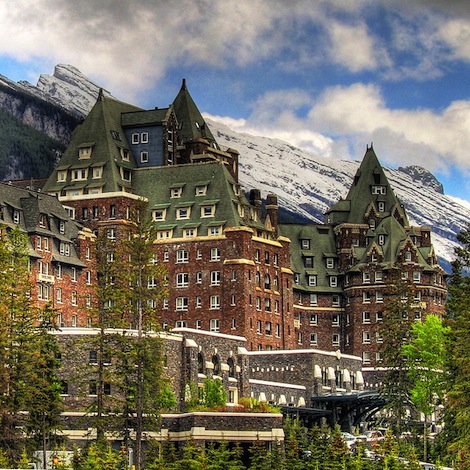
Banff Springs Hotel opened in 1888, and other hotels soon followed, including the Château Frontenac in Quebec City (1893), the Royal York in Toronto (1929), and the Hotel Vancouver (1939). These hotels remain in operation today and are landmarks in their destinations, functioning as accommodations and as local attractions due to their historic significance and outstanding architecture.
Through the 1950s and 1960s, an increase in motor traffic saw the rise of the motel. The word motel, used less commonly today, comes from the term “motorist’s hotel,” used to denote a hotel that provides ample parking and rooms that are easily accessible from the parking lot. Traditionally, these structures were designed with all the rooms facing the parking lot, and relied heavily on motor traffic from nearby highways (Diffen, 2015).
Today, there are a number of hotel types, which can be classified in multiple ways. Let’s explore these classifications in more detail.
Hotel Types
Hotels are typically referred to by hotel type or category. The type of hotel is determined primarily by the size and location of the building structure, and then according to the function, target market, service level, other amenities, and industry standards.
Take a Closer Look: Hotelier
The magazine Hotelier, available online and is a resource relied on by many industry professionals across Canada. Featuring profiles on current trends and initiatives, information about specific brands and properties, Hotelier is a good resource for students wanting more information about the sector in a dynamic format. Accessed on June 30, 2020 Hotelier had articles like Housekeeping Will Take Centre Stage in the New Normal and Tourism HR Canada Launches Recovery Toolkit. Take a look today, can you predict some of the topical articles that Hotelier may be covering?
Read breaking news and updates and find out about upcoming events. Subscribe at the Hotelier Magazine website.
Classifications
| [Skip Table] | |
| Type of Classification | Examples of Classifications |
|---|---|
| Size (number of rooms) |
|
| Location |
|
| Level of service |
|
| Market and function |
|
| Ownership and affiliation |
|
| Amenities |
|
| Industry standards |
|
| Brand categories and standards | Marriott has five brand categories (with examples below): Luxury: Ritz Carlton Distinctive Luxury: W Hotels Premium: Delta Hotels Distinctive Premium: Le Meridien Select: Four Points |
Competitive set is a marketing term used to identify a group of hotels that include the competitors that a hotel guest is likely to consider as an alternative. These can be grouped by any of the classifications listed in Table 3.1, such as size, location, or amenities offered. There must be a minimum of three hotels to qualify as a competitive set.
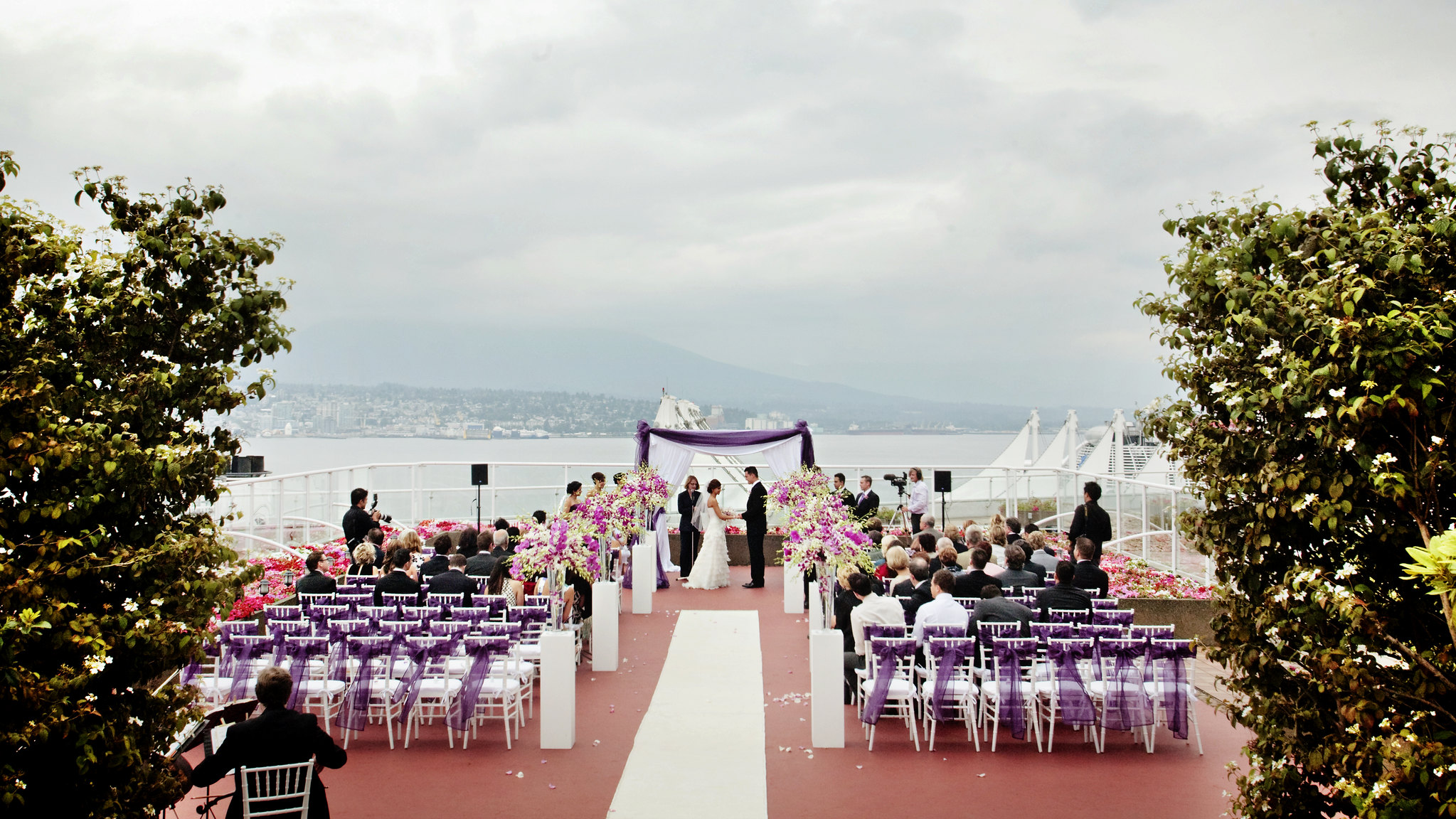
Business hotels, airport hotels, budget hotels, boutique hotels, convention hotels, and casino hotels are some examples of differentiated hotel concepts and services designed to meet a specific market segment. As companies continue to innovate and compete to capture defined niche markets within each set, we can expect to see the continued expansion of specific concepts. For example, hotels found close to, or even within, convention facilities are a great match for meetings and events, as well as the SMERF market (social, military, educational, religious, and fraternal segment of the group travel market). There are also some dynamic new brands in Canada including Hotel Zed located in Victoria and Kelowna, BC. The Hotel Zed concept brand message is ‘We are rebels against the ordinary’. This brand is funky, colourful, playful and approachable.
Spotlight On: British Columbia Hotel Association
The British Columbia Hotel Association (BCHA) represents over 800 member hotels and associate members associate members representing 80,000 rooms and more than 60,000 employees. The association produces an annual industry trade show and seminar series, and publishes InnFocus magazine for professionals in the trade. For more information, visit the BC Hotel Association website.
Table 3.2 outlines the characteristics of specific hotel types that have evolved to match the needs of a particular traveller segment. As you can see, hotels adapt and diversify depending on the markets they want and need to attract and retain to stay in business.
| [Skip Table] | ||
| Market Segment | Traveller Type | Characteristics |
|---|---|---|
| Commercial | Business |
|
| Leisure | Leisure |
|
| Meetings and groups | Corporate groups, associations, SMERF |
|
| Extended stay | Business and leisure |
|
Let’s now take a closer look at three types of hotel that have emerged to meet specific market needs: budget hotels, boutique hotels, and resorts.
Budget Hotels
The term budget hotel is challenging to define, however most budget properties typically have a standardized appearance and offer basic services with limited food and beverage facilities. Budget hotels were first developed in the United States and built along the interstate highway system. The first Holiday Inn opened in the United States in 1952; the first Quality Motel followed in 1963.
In Europe, Accor operates the predominant European-branded budget rooms. The Accor Economy brand includes: Breakfree, ibis, ibis Styles, ibis budget, greet, JO&JOE and hotelF1. These budget brands offer comfort, modern design, and breakfast on site; ibis Styles is all inclusive, with one price for room night, breakfast, and internet access (Accor, 2020).
The budget brands by Accor are an example of a shift toward the budget boutique hotel style. A relatively new category of hotel, budget boutique is a no-frills boutique experience that still provides style, comfort, and a unique atmosphere.
Boutique Hotels
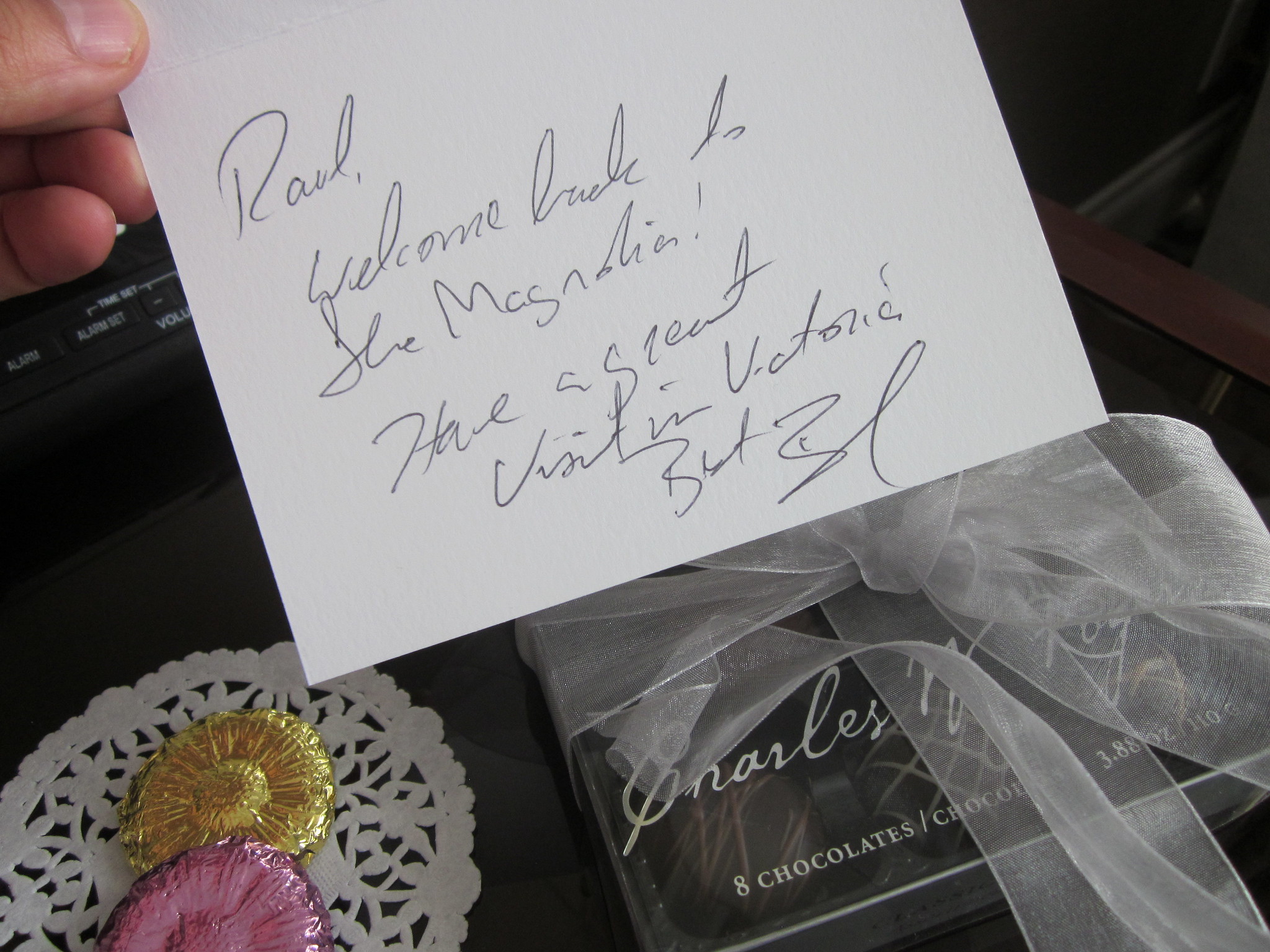
Canada currently has no industry standards to define boutique hotels, but these hotels generally share some common features. These include having less than 100 rooms and featuring a distinctive design style and on-site food and beverage options (Boutique Hotel Association, n.d.). As a reflection of the size of the hotel, a boutique hotel is typically intimate and has an easily identifiable atmosphere, such as classic, luxurious, quirky, or funky.
According to Bill Lewis, general manager for the Magnolia Hotel and Spa in Victoria “Boutique hotels are all about their smaller size, sense of style, and personalized nature.” He further notes that “the individual style of boutique hotels really provides a differentiated experience than that of the larger branded properties which have seen considerable consolidation in the last number of years. Our guests really appreciate this luxurious and intimate experience which our size and staffing levels allow us to achieve” (personal communication, 2020).
Resorts
A resort is a full-service hotel that provides access to or offers a range of recreation facilities and amenities. A resort is typically the primary provider of the guest experience and will generally have one signature amenity or attraction (Brey, 2009).
Examples of signature amenities include skiing and mountains, golf, beach and ocean, lakeside, casino and gaming, all inclusiveness, spa and wellness, marina, tennis, and waterpark. In addition, resorts also offer secondary experiences and a leisure or retreat-style environment.
Take a Closer Look: Condé Nast Best Hotels and Resorts in Canada
Condé Nast Traveler has many well-regarded “best of” lists, one of which is the Best Hotels and Resorts in the US and Canada. In 2020, 6 of the top 10 were located in BC, with the Wickaninnish Inn and Brentwood Bay Resort & Spa earning first and second place. You can read the rest of the list at Condé Nast Best Hotels and Resorts in the US and Canada for 2020.
Now that we understand the classifications of hotel types, let’s gain a deeper understanding of the various ownership structures in the industry.
Ownership Structures
There are several ownership models employed in the sector today, including independent, management contract, chains and franchise agreements, fractional ownership, and full ownership strata units. This section explains each of these in more detail and provides examples of each.
Independent
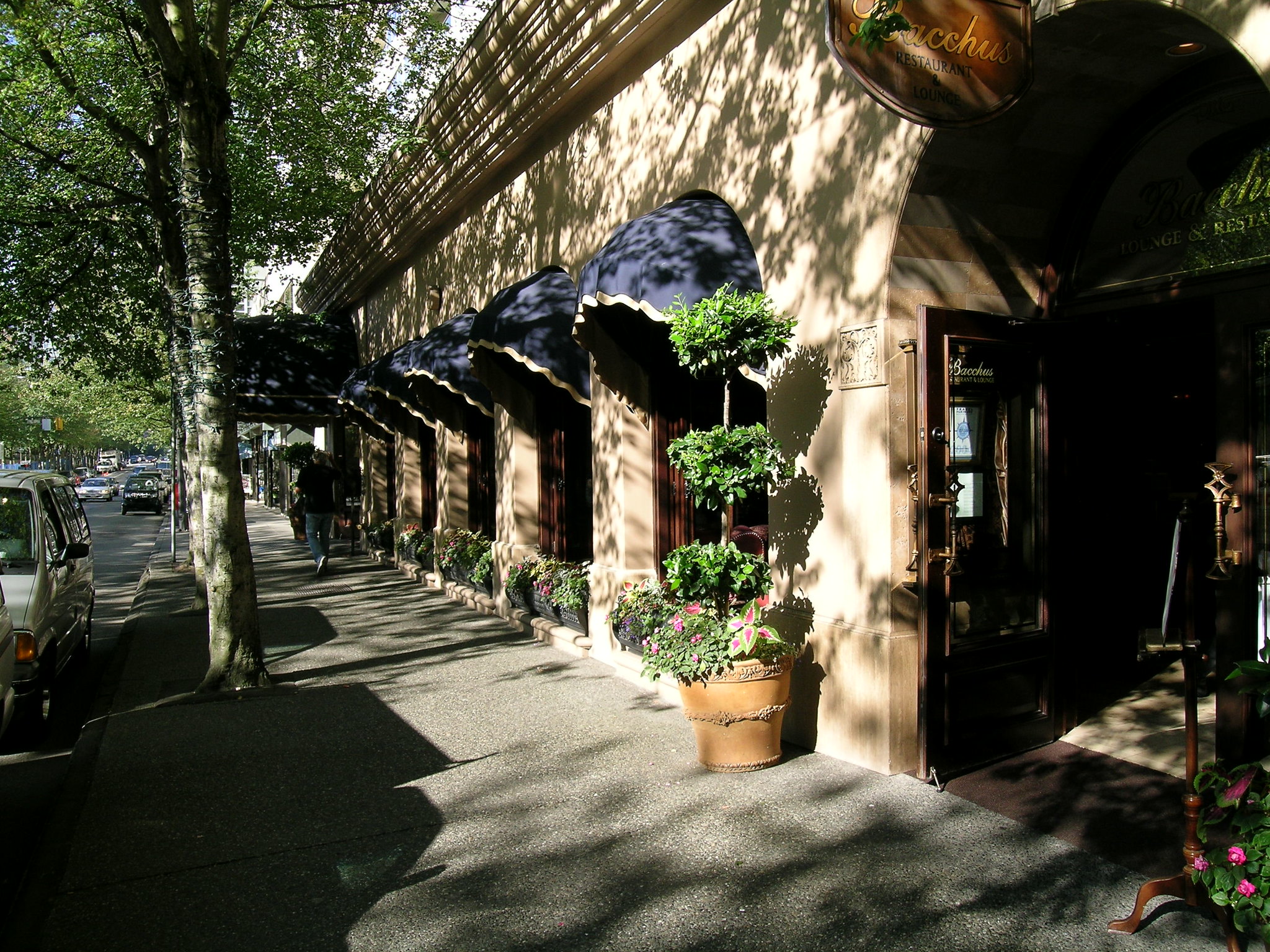
An independent hotel is financed by one individual or a small group and is directly managed by its owners or third-party operators. The term independent refers to a management system that is free from outside control.
There are a number of very well-established independently branded hotels. These hotel companies have developed their own standards, support systems, policies and procedures, and best practices in all areas of the business. Independent hotels have the flexibility to customize or adjust their systems to position their property for success, and the location, product, service, experience, sales and marketing, and brand are all necessary for that success (Cabañas, 2014). An example of an independent hotel is the Wedgewood Hotel and Spa in Vancouver, founded by Eleni Skalbania, and currently co-owned by her youngest daughter, Elpie Markinakis Jackson (Wedgewood, 2020).
Management Contract
Another business model is a management contract. This is a service offered by a management company to manage a hotel or resort for its owners. Owners have two main options for the structure of a management contract. One is to enter into a separate franchise agreement to secure a brand and then engage an independent third-party hotel management company to manage the hotel. SilverBirch Hotels is an example of a hotel management company that manages independent hotels and hotels operating under different major franchise brands, such as Marriott International (SilverBirch Hotels, 2020).
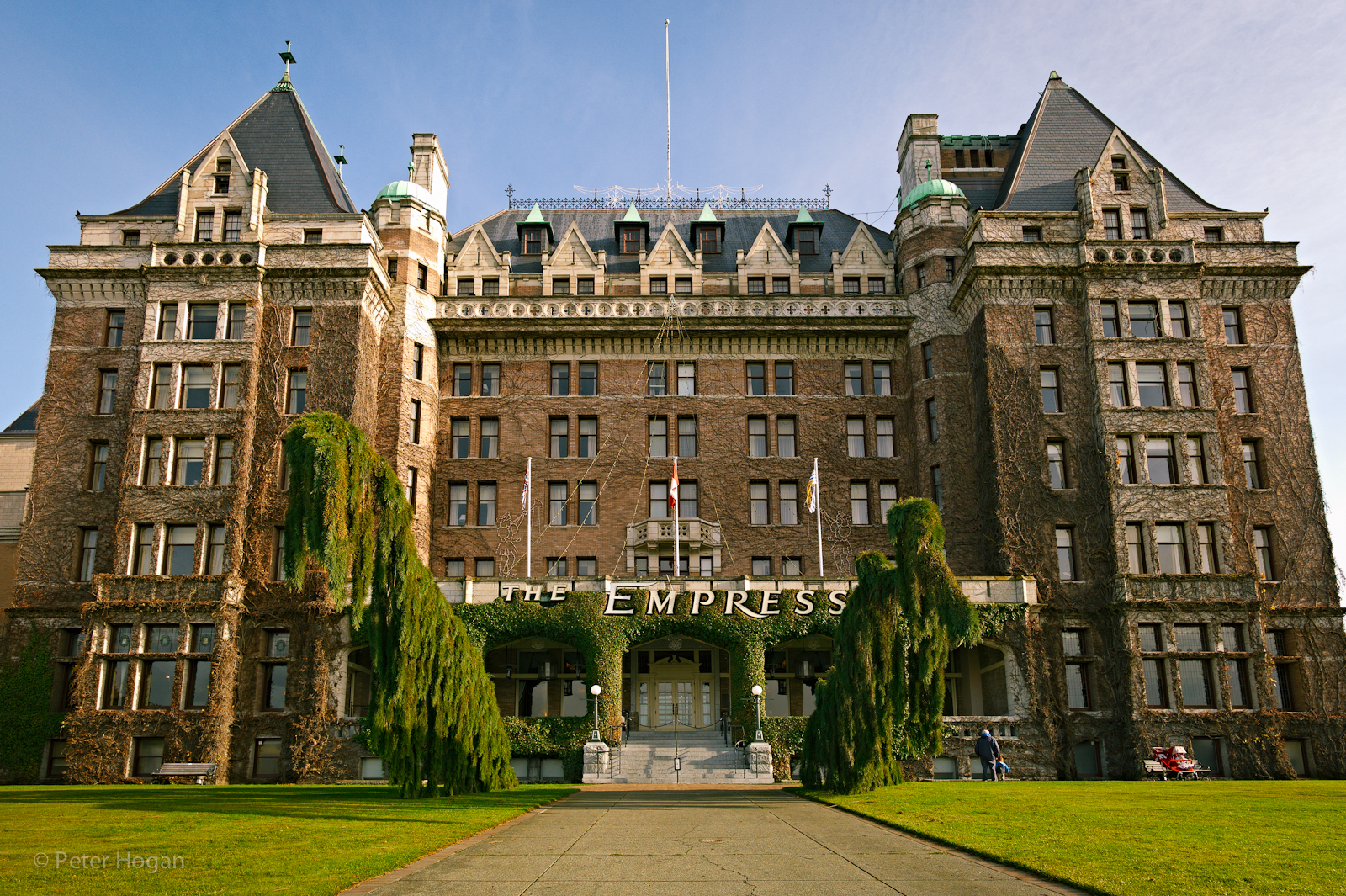
A slightly different option is for owners to select a single company to provide the brand and the expertise to manage the property. Four Seasons Hotels and Resorts and Fairmont Hotels and Resorts are companies that provide this option to owners. In 2014, the iconic Fairmont Empress hotel was purchased by Vancouver developer Nat Bosa and his wife Flora, who continued to retain Fairmont as the management company after the purchase (Meiszner, 2014).
Selecting a brand affiliation is one of the most significant decisions hotel owners must make (Crandell, Dickinson, & Kante, 2004). The brand affiliation selected will largely determine the cost of hotel development or conversion of an existing property to meet new brand standards. The affiliation will also determine a number of things about the ongoing operation including the level of services and amenities offered, cost of operation, marketing opportunities or restrictions, and the competitive position in the marketplace. For these reasons, owners typically consider several branding options before choosing to operate independently or selecting a brand affiliation.
Chains and Franchise Agreements
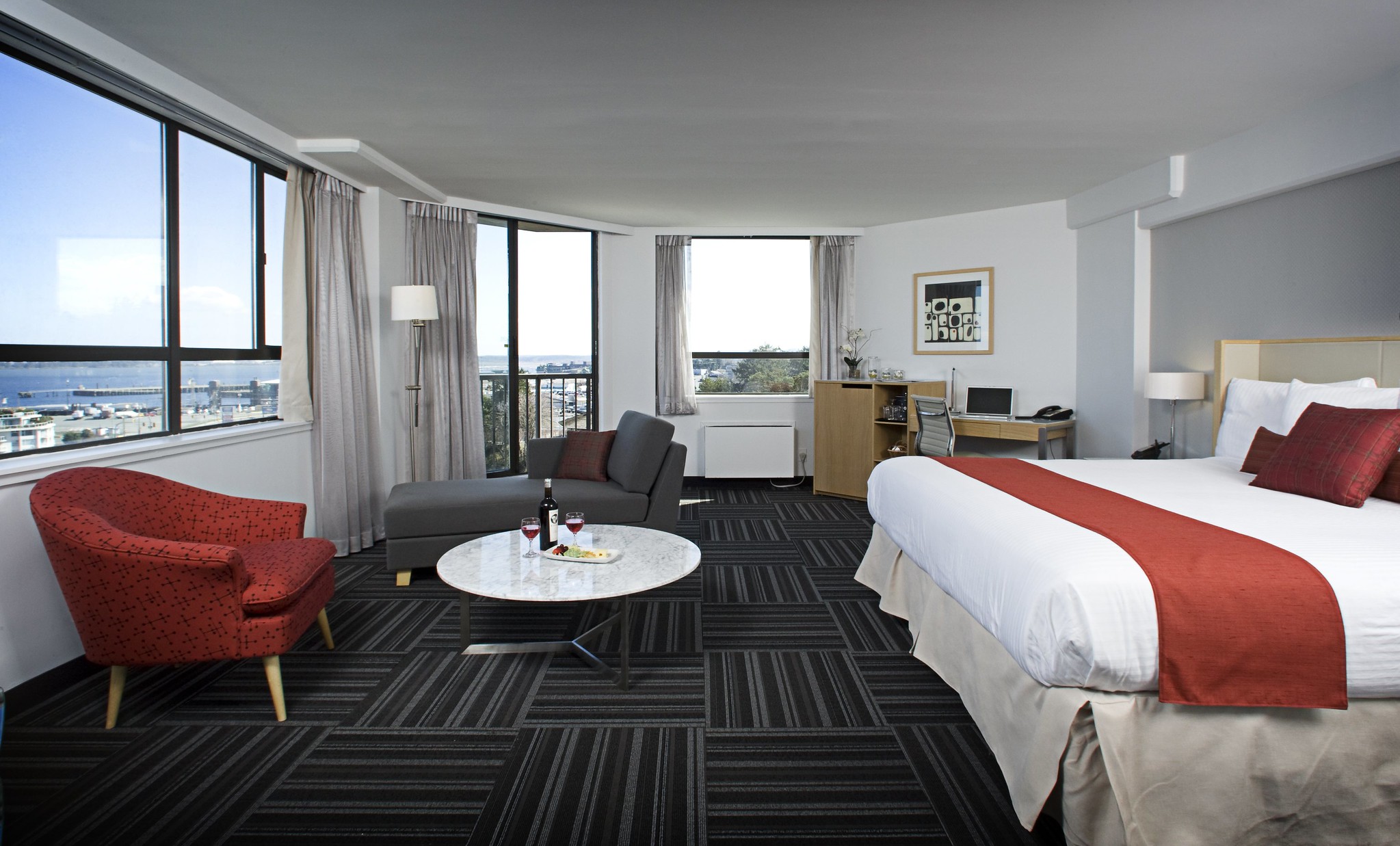
Another managerial and ownership structure is franchising. A hotel franchise enables individuals or investment companies (the franchisee) to build or purchase a hotel and then buy or lease a brand name to operate a business and become part of a chain of hotels using the franchisor’s hotel brand, image, goodwill, procedures, controls, marketing, and reservations systems (Rushmore, 2005).
A well-known franchise in BC is Coast Hotels. A franchisee with Coast Hotels becomes part of a network of properties that use a central reservations system with access to electronic distribution channels, regional and national marketing programs, central purchasing, and brand operating standards (Coast Hotels, 2020). A franchisee also receives training, support, and advice from the franchisor and must adhere to regular inspections, audits, and reporting requirements.
Selecting a franchise structure may reduce investment risk by enabling the franchisee to associate with an established hotel company. Franchise fees can be substantial and a franchisee must be willing to adhere to the contractual obligations with the franchisor (Migdal, n.d.; and Rushmore, 2005). Franchise fees typically include an initial fee paid with the franchise application, and then continuing fees paid during the term of the agreement. These fees are sometimes a percentage of revenue but can be set at a fixed fee. Franchise fees generally range from 4% to 7% of gross rooms revenue (Crandell et al., 2004).
Fractional Ownership
In a fractional ownership model, developers finance hotel builds by selling units in one-eighth to one-quarter shares. This financing model was very popular in BC from the late 1990s to 2008 (Western Investor, 2012). Examples of fractional ownership include the Sun Peaks Ski Resort in Kamloops and the Penticton Lakeside Resort.
In this model, owners have an ownership interest, owning a ‘fraction’ of the unit they purchased. Owners can place their unit in a rental pool. The investment return for owners is based on the term of the contract they have for their unit, the strata fees, and the hotel’s occupancy. Managing fractional ownership can be very time consuming for hotel owners or management companies as each hotel unit can have up to eight owners. If occupancy rates are too low, an owner may not be able to cover the monthly strata fees. For the hotel management company, attaining occupancy rate targets is necessary to ensure that the balance of revenue is sufficient to cover the hotel’s operating expenses.
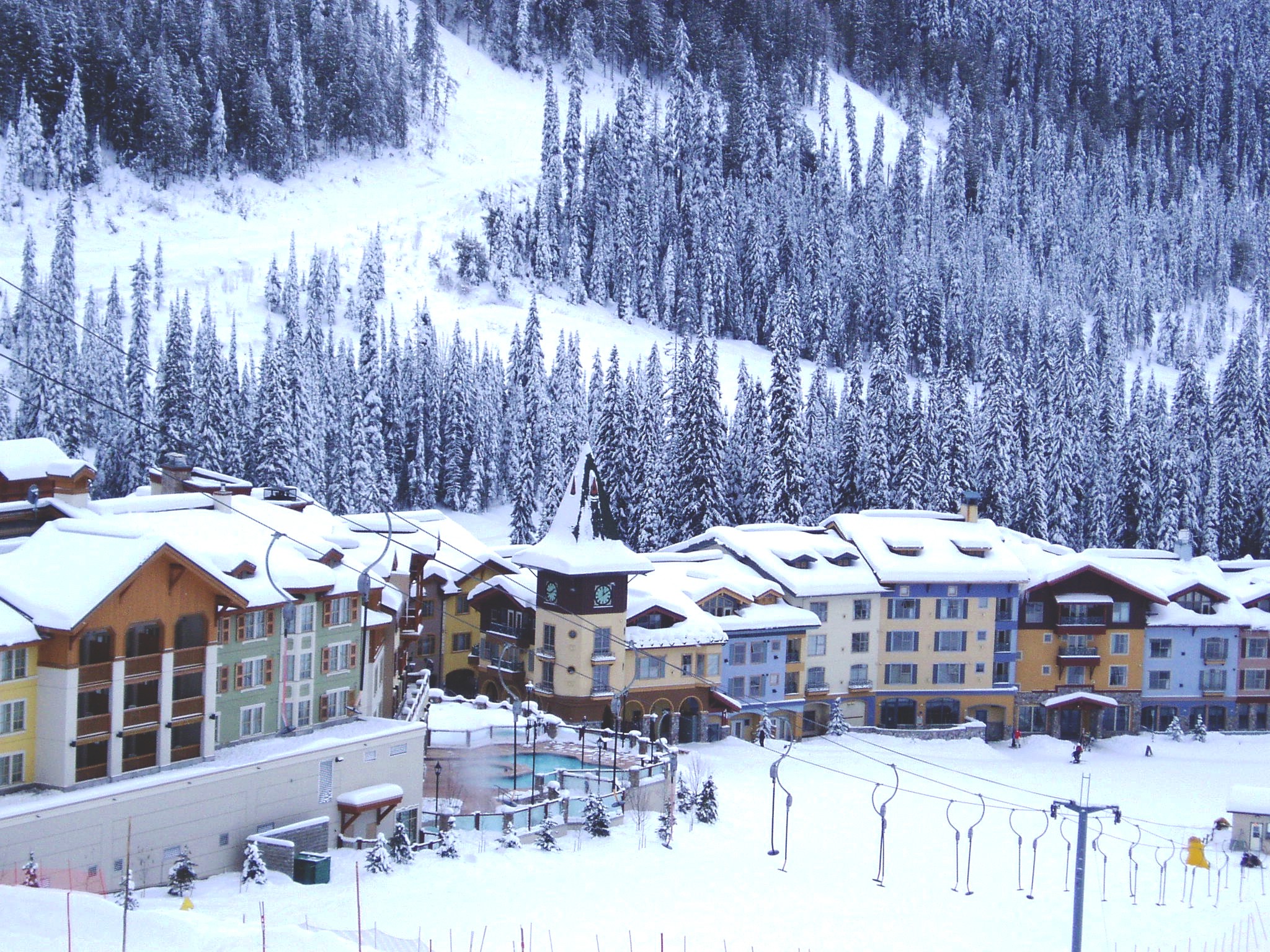
Developers now anticipate that fractional ownership will not be used to finance new hotel builds in the future due to poor performance. There have been some high-profile collapses for hotel developers in BC, and between 2002 and 2012 fractional hotel owners experienced asset depreciation (Western Investor, 2012). It is uncertain how the market will perform.
Full Ownership Strata Units
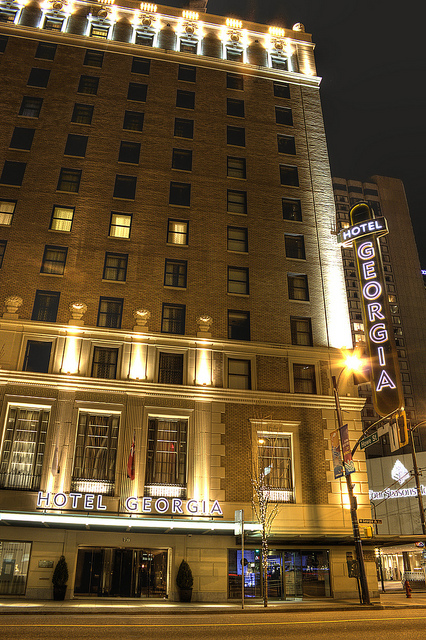
In this financing model, hotel developers finance a new hotel build with the sale of full ownership strata units. The sale of the condominium units finances the hotel development. Examples include the Fairmont Pacific Rim and the Rosewood Hotel Georgia.
Take a Closer Look: The BC Hospitality Foundation
The BC Hospitality Foundation (BCHF) was created to help support hospitality (accommodation and food and beverage) professionals in their time of need. It has expanded to become a provider of scholarships for students in hospitality management and culinary programs. To raise funds for these initiatives, the foundation hosts annual events including auctions and a golf tournament. For more information, visit the BC Hospitality Foundation website.
No matter what the ownership model, it’s critical for properties to offer a return on investment for owners. The next section looks at ways of measuring financial performance in the sector.
Financial Performance
According to hotel consultant Betsy McDonald from HVS International Hotel Consultancy, the “industry rule of thumb is that a hotel room must make $1 per night for every $1,000 it takes to build or buy. If the hotel costs $125,000 per [room], the room has to rent for $125 per night on average and you need 60% to 70% occupancy to break even” (McDonald, 2011).
Several terms and formulas are used to evaluate revenue management strategies and operational efficiency:
Occupancy is a term that refers to the percentage of all guest rooms in the hotel that are occupied at a given time.
Average daily rate (ADR) is a calculation that states the average guest room income per occupied room in a given time period. It is determined by dividing the total room revenue by the number of rooms sold.
Revenue per available room (RevPAR) is a calculation that combines both occupancy and ADR in one metric. It is calculated by multiplying a hotel’s ADR by its occupancy rate. It may also be calculated by dividing a hotel’s total room revenue by the total number of available rooms and the number of days in the period being measured.
Costs per occupied room (COPR) is a figure that states all the costs associated with making a room ready for a guest (linens, cleaning costs, guest amenities).
These terms and measurements allow hotel staff and management to track the success of the operation and to compare against competitors and regional averages.
Spotlight On: The Top 50 Report: The Canadian Hotel Industry Continues to Thrive
Hotelier Magazine produced a special report in 2018 on the top sales in Canadian Hotels. At the top of the list was Four Seasons recording an estimated $5,188.8 billion in gross sales in 2016. Read the associated article online at The Top 50 Report: The Canadian Hotel Industry Continues to Thrive.
Across all ownership models, most properties have operational aspects in common. But before we take a closer look at the roles within a typical hotel, let’s review an important part of the accommodations sector in Canada and BC: camping and recreational vehicle (RV) stays.


